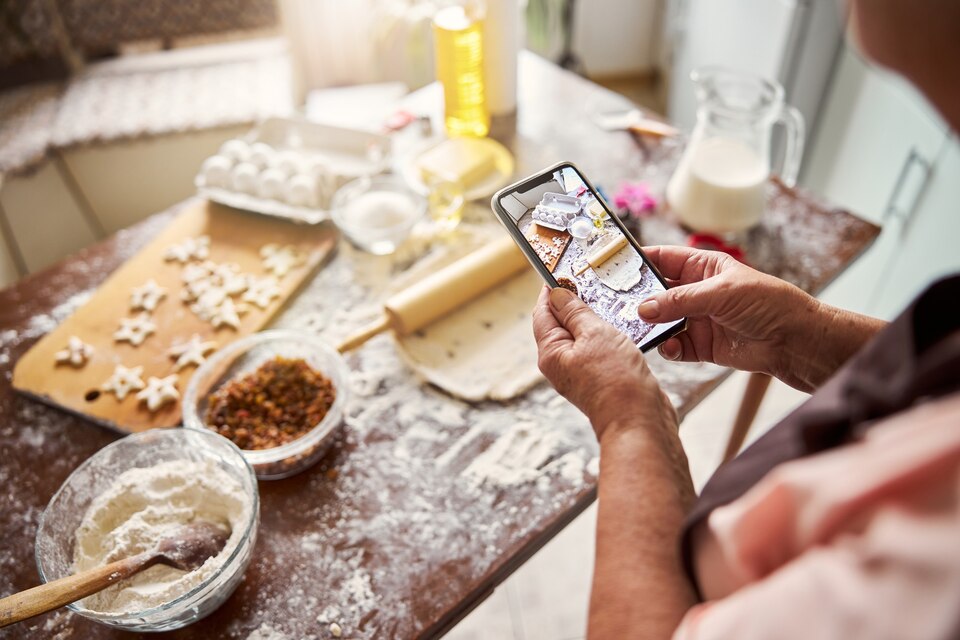Introduction
Managing a busy schedule while keeping a healthy and enjoyable diet can be a considerable challenge in today’s fast-paced society. Meal planning is a useful tool that may help people and families stay organized, save time, and eat a healthy diet. Meal preparation has gotten easier and more effective thanks to the usage of recipe sharing applications. These applications include a plethora of recipes, food ideas, and meal planning capabilities that have the potential to alter the way we plan and prepare our meals. In this blog post, we’ll look at how to use recipe sharing apps efficiently for meal planning.
1. Choosing the Right Recipe Sharing App
Choosing the proper recipe sharing app for effective meal planning is the first step. There are several applications accessible, each with its own set of features and benefits. Consider things like recipe diversity and quality, simplicity of use, meal planning skills, grocery list integration, and community participation. Among the most popular recipe sharing applications are:
a. Pinterest: Pinterest is an excellent tool for discovering and saving recipes because of its large library of user-curated material. Users may build boards for specific meal plans, making it simple to arrange weekly meals.
b. Yummly: Yummly provides customized recipe ideas based on your interests and dietary limitations. It also has a meal planner and shopping list tool, which simplifies the planning process.
c. Mealime: This software focuses on personalized meal planning with recipes tailored to your dietary needs and family size. It creates a shopping list based on the recipes you select, making grocery shopping easier.
d. Paprika: Users may collect and organize recipes from multiple sources, make meal plans, and generate shopping lists using Paprika. It also offers a useful function for scaling recipes to meet the number of servings you want.
2. Organizing Your Recipe Collection
Once you’ve decided on a recipe sharing app, you must organize your recipe collection effectively. Within the program, create categories or folders to categorize recipes by meal type (breakfast, lunch, supper), cuisine, dietary restrictions, or any other criterion that suits your needs. This organizing approach can help you identify and schedule meals more quickly.
3. Creating Weekly Meal Plans
Meal planning capabilities are commonly included into recipe sharing applications, allowing you to plan your weekly meals effortlessly. Here’s a step-by-step guide to making a weekly food plan with these apps:
a. Review Your Schedule: Consider your weekly plan, including job responsibilities, social gatherings, and any other activities that may interfere with meal preparation time. For hectic days, plan simpler and faster meals.
b. Select Recipes: Browse the app’s library for recipes for each day of the week. To guarantee a well-rounded diet, aim for a balance of proteins, vegetables, grains, and other dietary categories.
c. Drag and Drop: To assign recipes to certain days, use the app’s drag-and-drop functionality. This graphic depiction of your weekly plan aids in easily arranging and altering the meal schedule.
d. Generate Shopping List: Most applications allow you to create a shopping list based on the recipes you’ve chosen. To guarantee a comprehensive and effective shopping experience, go over the list, check for ingredients you already have, and add any missing goods.
4. Adaptability and Flexibility
Meal preparation should not be rigid and should allow for adaptability and flexibility. Because life may be unpredictable, be prepared to make changes to your meal plan based on unforeseen events, mood, or preferences.
5. Engage with the Community
Many recipe sharing applications feature a thriving community of users who share their recipes, ideas, and tweaks. Participate in this group to get inspiration, learn new culinary skills, and learn how to improve your meal planning process.
6. Sustainability and Waste Reduction
Efficient meal planning also includes thinking about sustainability and reducing food waste. Consider arranging meals that employ comparable products to limit the need for unnecessary purchases and make creative use of leftovers in following meals.
7. Utilizing Advanced Features
Explore and use sophisticated capabilities provided by recipe sharing apps in addition to basic meal planning. These characteristics frequently include:
a. Nutritional Information: Some applications give nutritional information for each dish, allowing you to make educated choices based on your dietary needs and objectives.
b. Recipe Scaling and Conversion: Do you need to modify a recipe for a larger crowd or a smaller portion? Make use of tools that allow you to scale recipes as needed.
c. Allergy and Dietary Filters: To locate recipes that are suited for you and your family, use the filtering options based on allergies, dietary choices, or ingredient restrictions.
d. Customized Meal Preferences: Save your favorite ingredients, tastes, and cooking methods to receive personalized recipe ideas.
e. Cooking Timers and Instructions: Some applications provide cooking timers and step-by-step directions, which improves your cooking experience and ensures exact outcomes.
f. Integration with Smart Home Devices: Apps that work with smart home devices, such as voice assistants, can help to speed up the cooking process by giving hands-free directions and controls.
8. Collaborative Meal Planning
Use the app’s collaborative capabilities to include family members or housemates in the meal planning process. Allow everyone to submit their choices, and then work together to construct a meal plan that satisfies a variety of tastes and dietary requirements.
9. Bulk Cooking and Freezing
Use meal planning to include bulk cooking into your routine. Plan meals that may be made in bulk and frozen for later use, saving time on hectic days.
10. Seasonal and Local Ingredient Utilization
Plan your meals around the seasons and use items that are readily accessible in your area. This not only helps local farmers, but it also assures you eat fresh, in-season vegetables.
11. Review and Reflect
Take some time after a week or month of following your meal plans to reflect on what went well and what didn’t. Did you like the range of foods? Were the portion sizes sufficient? Use this input to enhance the efficiency of your meal planning process in the future.
12. Incorporate Flexibility for Special Occasions
Plan your meals around special occasions, holidays, or social engagements. Consider these occasions while preparing your weekly meal plan, providing for a balance of ordinary and celebration foods.
13. Stay Updated with New Features and Recipes
Update your recipe sharing app on a regular basis to gain access to new features, improvements, and a wider choice of recipes. Exploring new dishes and ideas may keep your meal planning fun and prevent culinary boredom.
14. Track Expenses and Budget
Some applications let you track the price of items and predict your meal costs. When planning your meals, this can help you remain within your budget and make educated decisions.
Conclusion
Recipe sharing applications have transformed the way we prepare meals, making it more efficient, organized, and fun. You may maximize your meal planning process by selecting the proper app, organizing your recipe collection, generating weekly meal plans, remaining adaptive, and connecting with the community. Additionally, considering sustainability and waste reduction is essential to ensure that your meal planning is not just effective but also ecologically responsible. To enhance your experience further, consider exploring a food app development solution for recipe sharing. Begin using recipe sharing apps and innovative food app development solutions right away to reap the benefits of a well-planned and enjoyable diet. Good luck in the kitchen!





